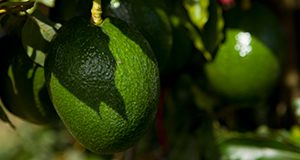Esta publicación proporciona información sobre azúcares y otros edulcorantes en la dieta estadounidense. La publicación describe fuentes ocultas de azúcares agregados en los alimentos para ayudar a aquellos que desean reducir la ingesta de azúcar, a encontrar los azúcares agregados en sus dietas. La sección sobre edulcorantes de alta intensidad analiza las características de cada edulcorante aprobado.
This is the Spanish translation of FSHN20-46/FS406, Nutrition for Health and Fitness: Sugar and Other Sweeteners. Written by Wendy Dahl and Linda Bobroff, translated by Daniela Rivero-Mendoza, and published by the UF/IFAS Food Science and Human Nutrition Department.
https://edis.ifas.ufl.edu/fs407
Tag: Nutrition for Health and Fitness series
Nutrition for Health and Fitness: Sugar and Other Sweeteners
This new 8-page publication of the UF/IFAS Food Science and Human Nutrition Department provides information about sugars and other sweeteners in the American diet. It describes hidden sources of added sugars in foods to help those who want to reduce sugar intake find the added sugars in their diets. The section on high-intensity sweeteners looks at the characteristics of each approved sweetener, including aspartame, sucralose, and stevia. Written by Linda Bobroff.
https://edis.ifas.ufl.edu/fs406
Nutrition for Health and Fitness: Sodium in Your Diet

The foods you eat and the way you prepare and serve them affect the amount of sodium in your diet. This 5-page fact sheet Written by Linda B. Bobroff, and published by the UF/IFAS Department of Family, Youth and Community Sciences will help you evaluate your sodium intake.
edis.ifas.ufl.edu/he696
Nutrition for Health and Fitness: Fat in Your Diet
We frequently hear about the epidemic of obesity. We also hear a variety of recommendations for how much and what type of fat we should have in our diets. With new research being published all the time, it can get confusing for consumers. This 8-page fact sheet is a major revision that provides tips to help individuals meet dietary guidelines and reduce health risks, as well as a few tasty recipes to try. Written by Linda B. Bobroff, and published by the UF Department of Family, Youth and Community Sciences, revised March 2017.
http://edis.ifas.ufl.edu/he695
Nutrición para una mejor salud y condición física: el sodio en su dieta (FCS8129Span/HE986)
This 6-page fact sheet was written by Linda B. Bobroff , and published by the UF Department of Family Youth and Community Sciences, May 2011.
http://edis.ifas.ufl.edu/he986
Nutrition for Health and Fitness: Fat in Your Diet (FCS8128/HE695)
Fat is big news. Almost every day we hear about the epidemic of obesity, and recommendations for how much and what type of fat we should have in our diets. With new research all the time, it can get confusing for consumers. This revised 8-page fact sheet will help you understand why it’s a good idea to choose a diet that is low in saturated fat, trans fat, and cholesterol. It also will give you tips to help you meet these dietary guidelines. You will learn how to make simple changes in your eating habits to help reduce your health risks. Written by Linda B. Bobroff and published by the UF Department of Family Youth and Community Sciences, April 2011.
http://edis.ifas.ufl.edu/he695
FCS8219/HE696 Nutrition for Health and Fitness: Sodium in Your Diet
Revised! FCS8219, a 6-page illustrated fact sheet by Linda B. Bobroff, provides facts about sodium, sodium and high blood pressure, how to read food labels and cook with less sodium. Includes references, sodium intake checklist and recipes for low sodium foods. Published by the UF Department of Family, Youth and Community Sciences, October 2010.
http://edis.ifas.ufl.edu/he696

